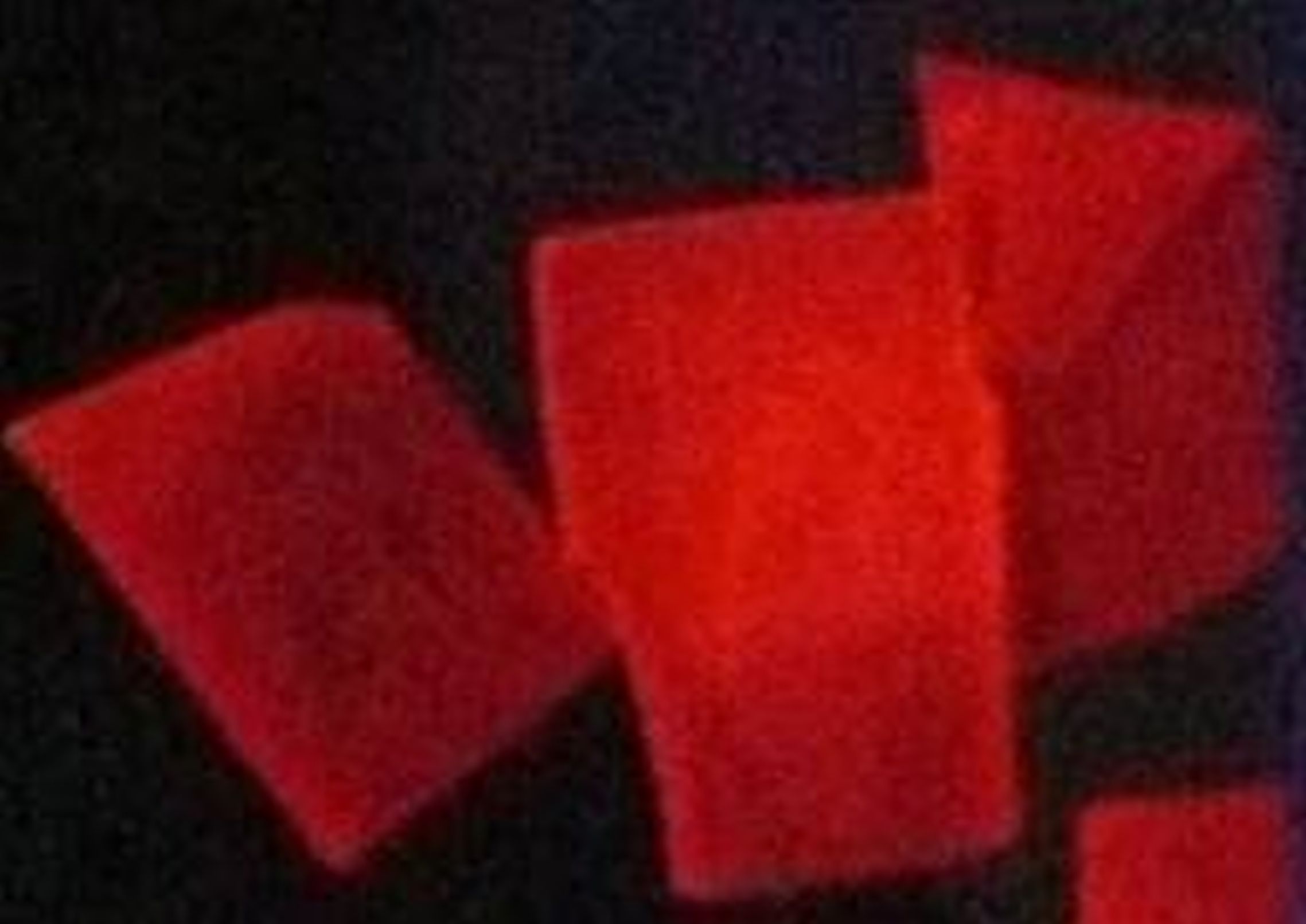


How can you mark an object made of glass so that it can be uniquely identified in a large batch or can be used to trace the product? To answer this question, the boraident GmbH and the Fraunhofer Institute for Microstructure of Materials and Systems IMWS in Halle (Saale) focused on laser-based, fluorescent marking and developed a corresponding process in a joint project.
Laser markings are one of the focal points of the boraident GmbH in Halle (Saale), which develops products for customer-specific applications for glass and other transparent media. These markings already play a central role in the manufacturing process: using various features for the purpose of identification, it is always possible to determine which glass is in which position or in which production step. Printing processes are generally unsuitable for marking glass because glass is very smooth and does not absorb ink.
Together with the Fraunhofer IMWS, a new technology for marking glass surfaces was developed in the three-year project. The project consortium focused on the creation of fluorescent markings on glass surfaces that are permanent and almost completely invisible when exposed to daylight in the visible spectrum but that fluoresce in the visible spectrum when exposed to UV light to enable them to be read (by a machine). Such markings, which can be created using a laser process on or in the glass, offer the additional advantage that the glass is not damaged by the marking process, in contrast to other processes such as glass printing where damage can occur.
“Both sides have benefited greatly from the cooperation. Our industrial partner boraident was able to expand its expertise in laser labeling processes for glass surfaces, and we applied our innovative force in material science, including in the development of fluorescent materials and in microstructure diagnostics, to accelerate the development of the material and the process”, is how Prof. Thomas Höche, Head of the Optical Materials and Technologies Business Unit at the Fraunhofer IMWS, explained the approach. Two promising potential applications he noted were product safety and protection against counterfeiting, both of which are becoming more and more important, especially for high-tech glass objects like those used in medicine, the chemical industry, or telecommunications. “With the processes we have developed, it is possible to mark a glass object with information on the manufacturer who produced it, for example – this is possible throughout the entire life cycle of the glass object, and objects can be marked so uniquely that the marking is difficult to copy”, said Dr. Araceli de Pablos-Martin, who coordinated the activities at the Fraunhofer IMWS.
Various approaches were pursued over the course of the project, from thermally collapsed fluorescent nanopowders and macroporous glass materials doped with fluorescent particles and aqueous rare earth element solutions to saline solutions implanted in the surface of the glass using a laser beam. The result of the project is an implementable and durable solution to the question posed at the beginning.